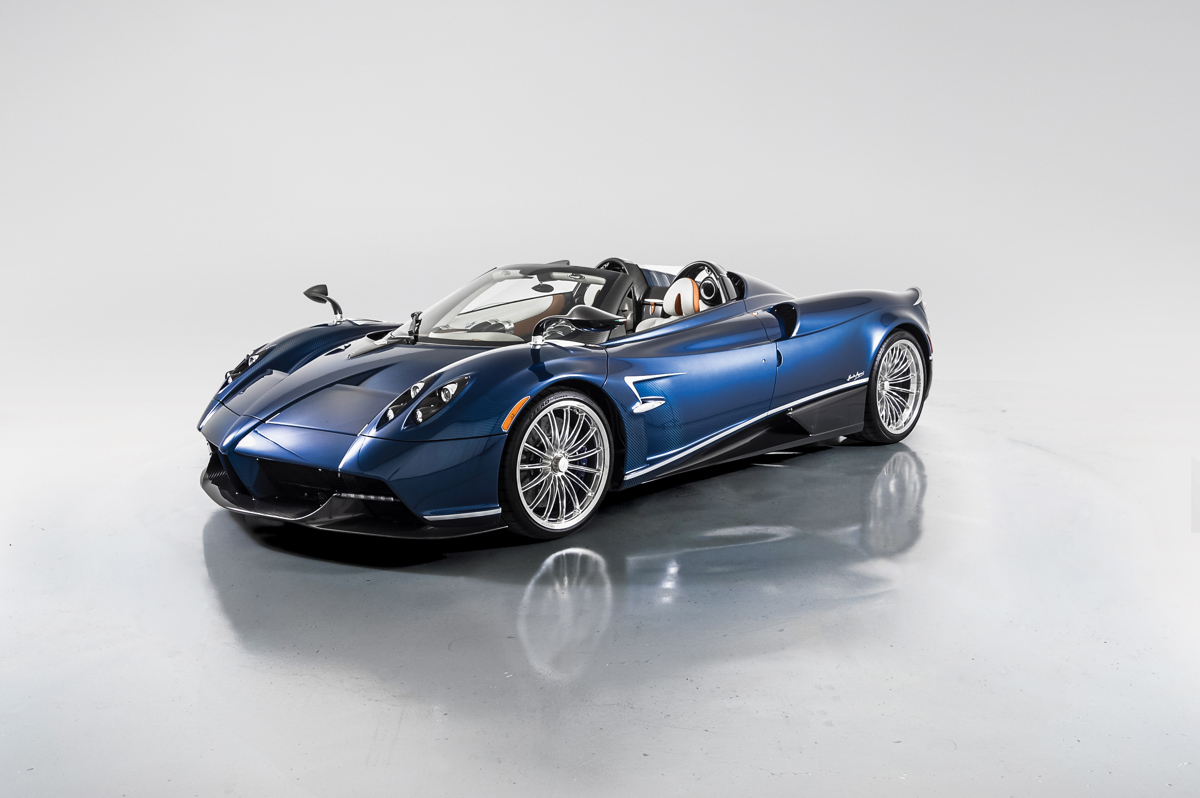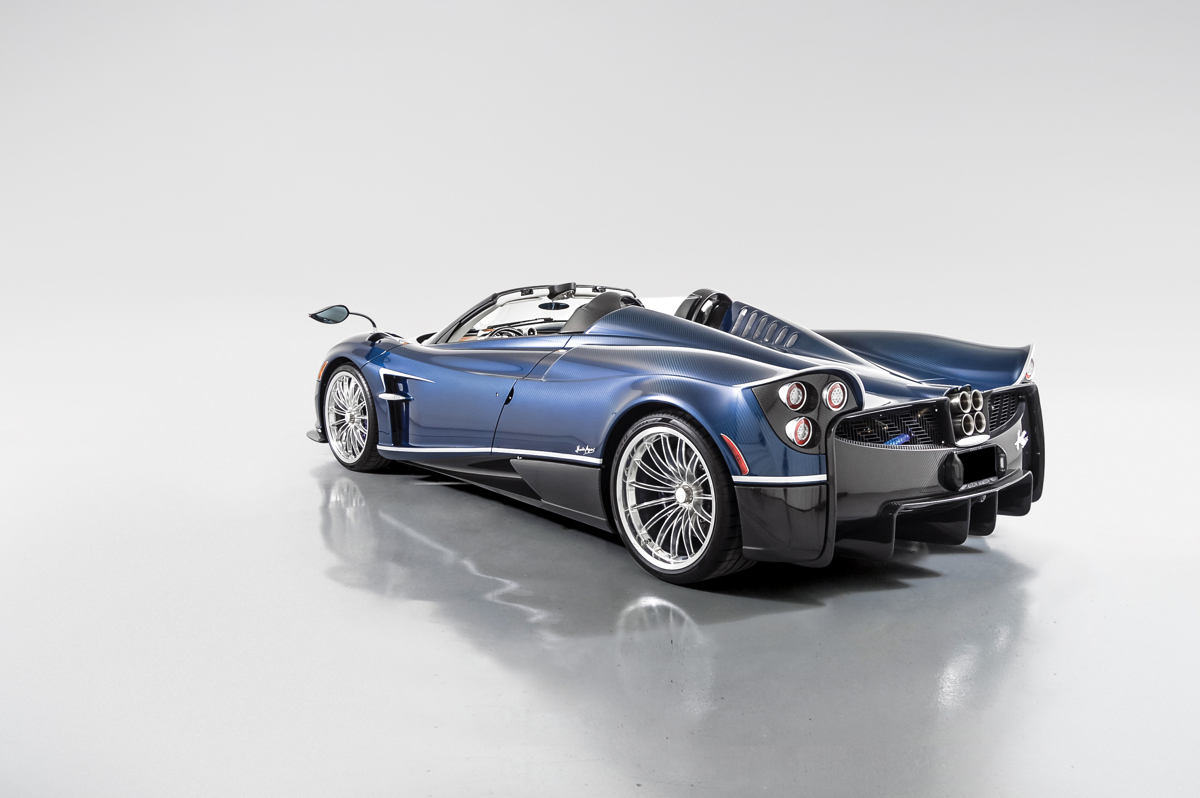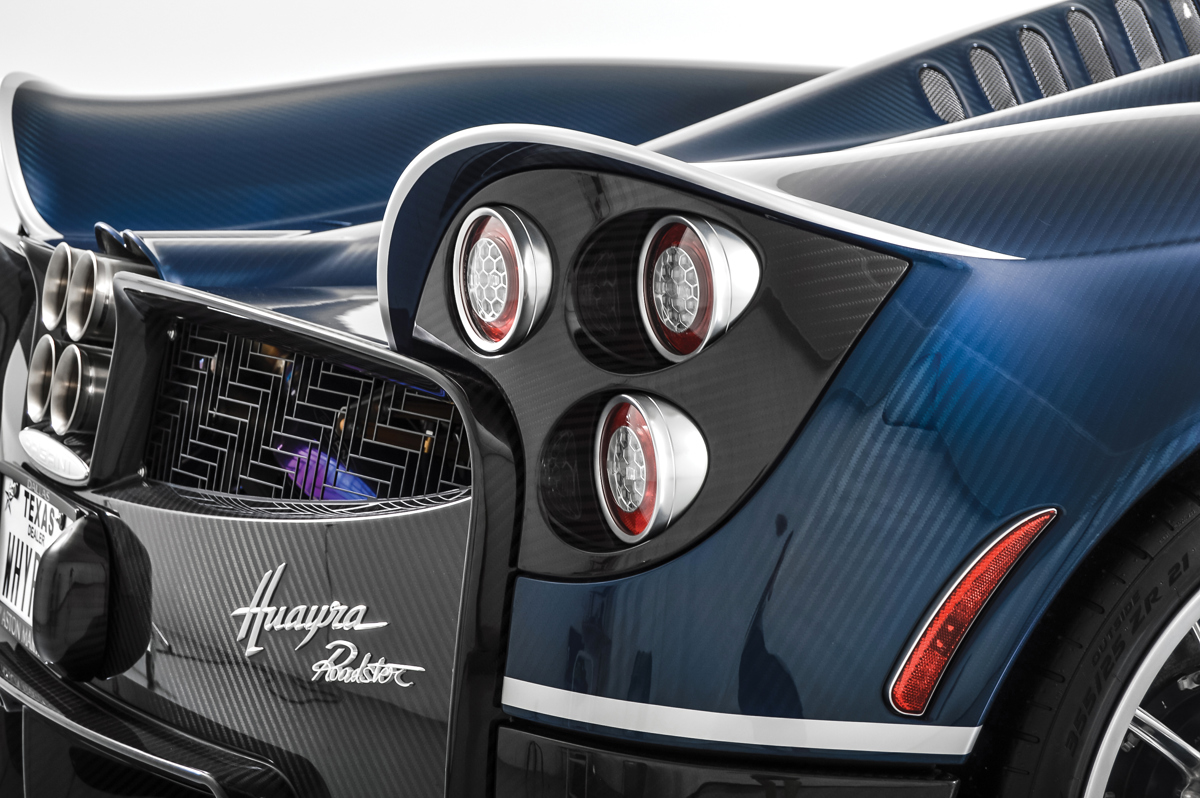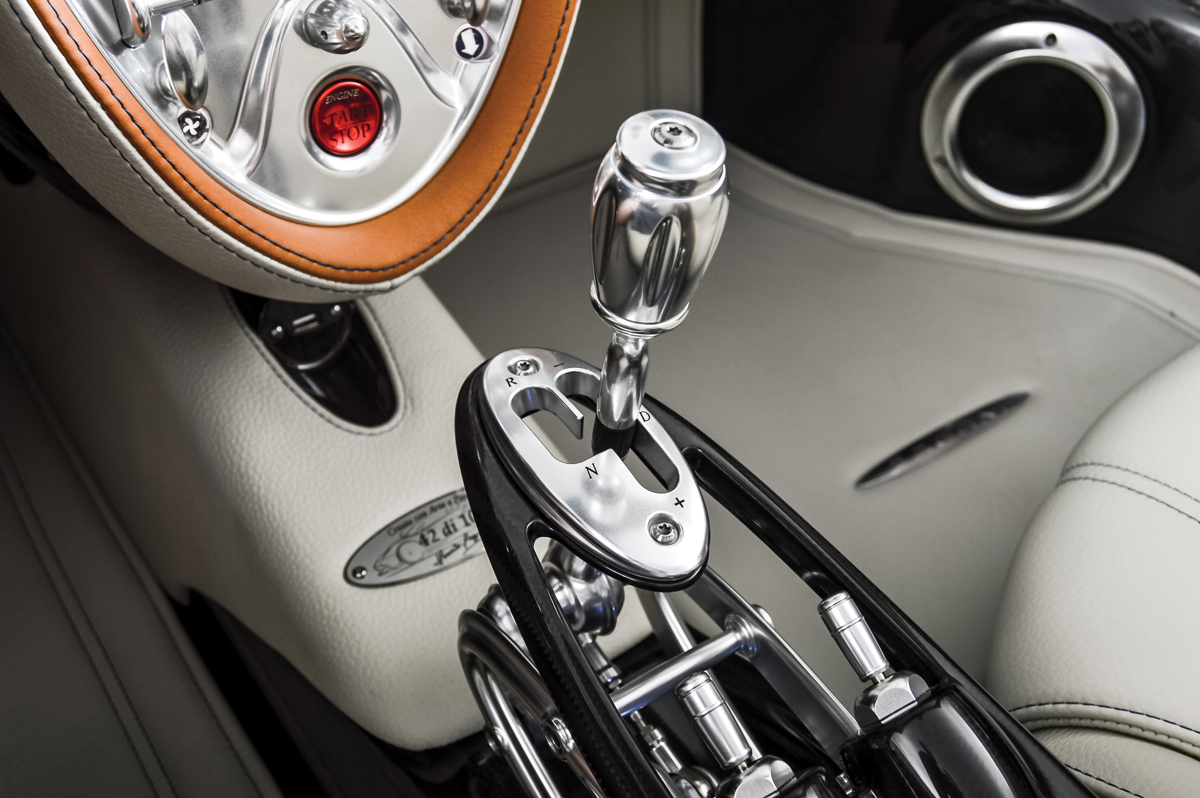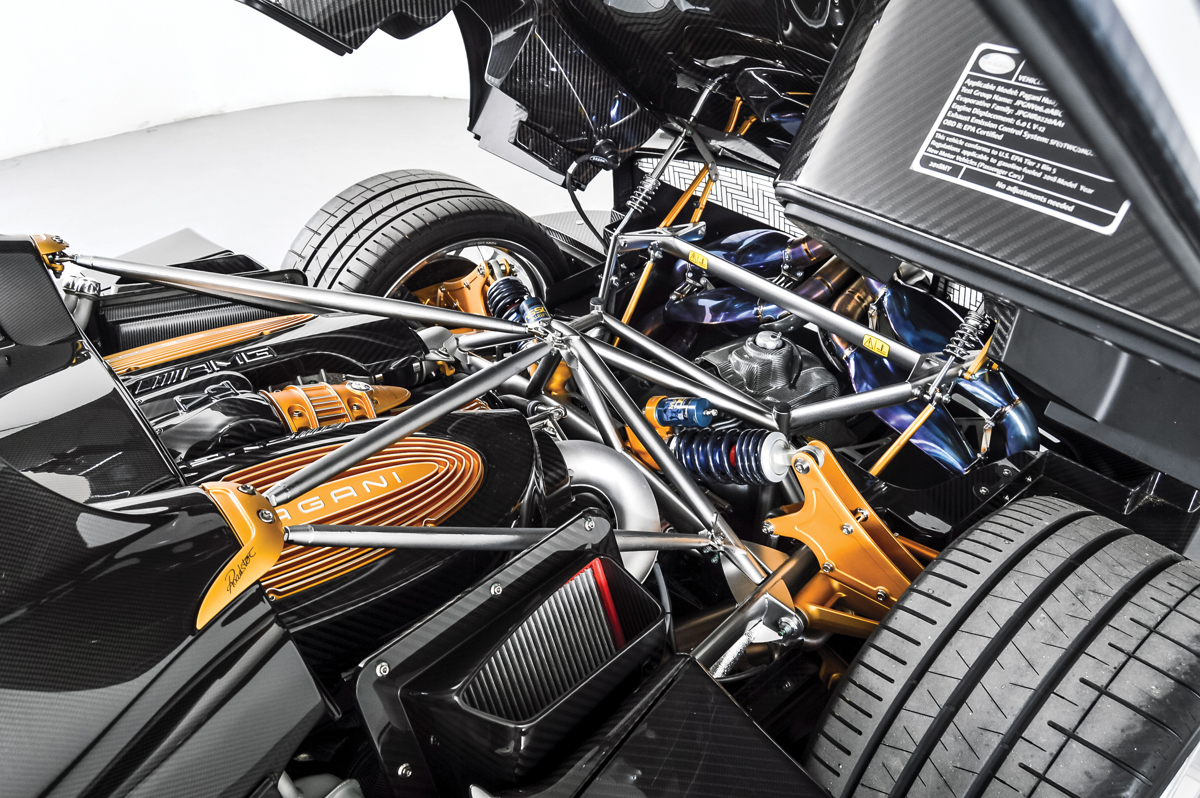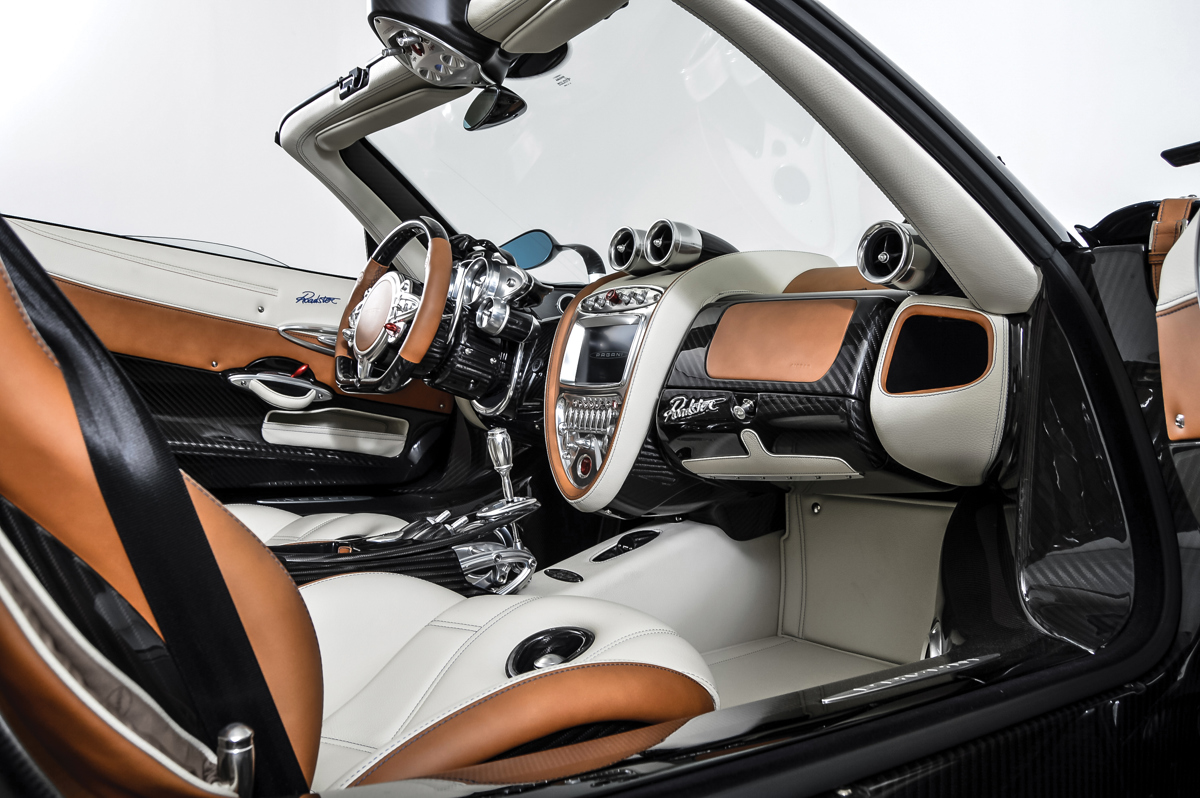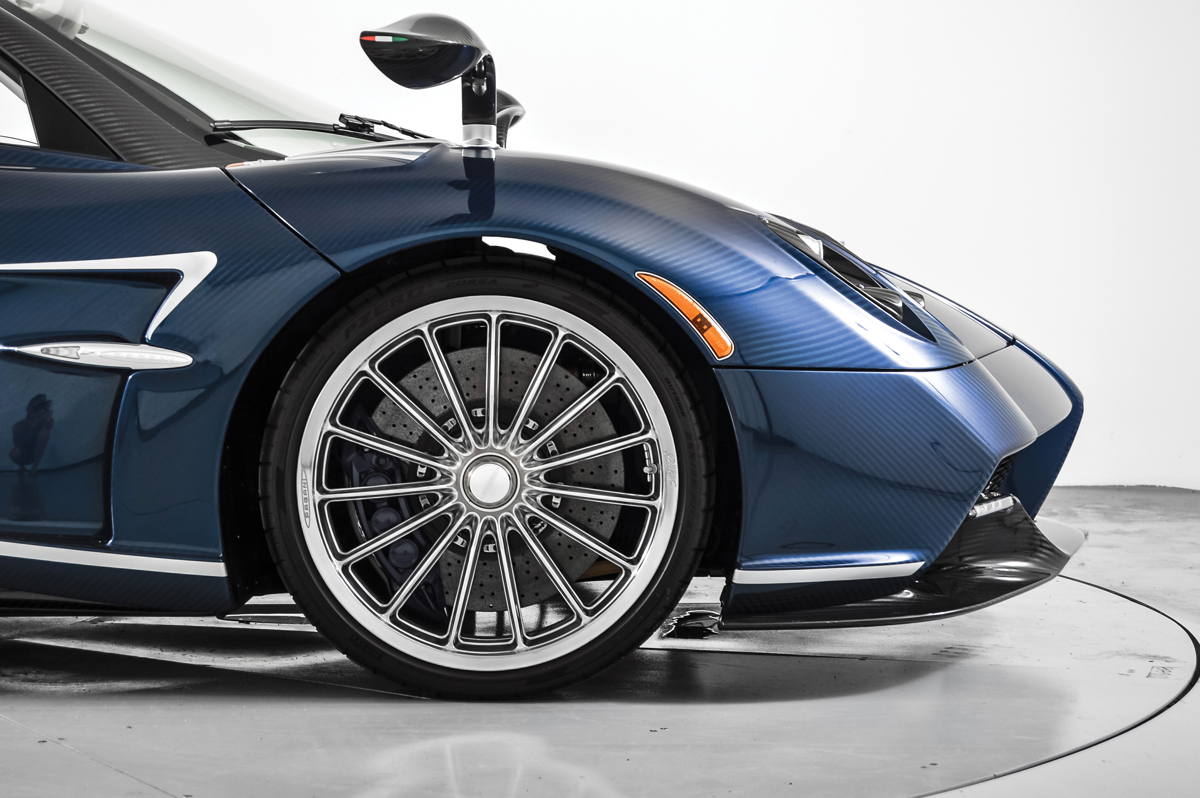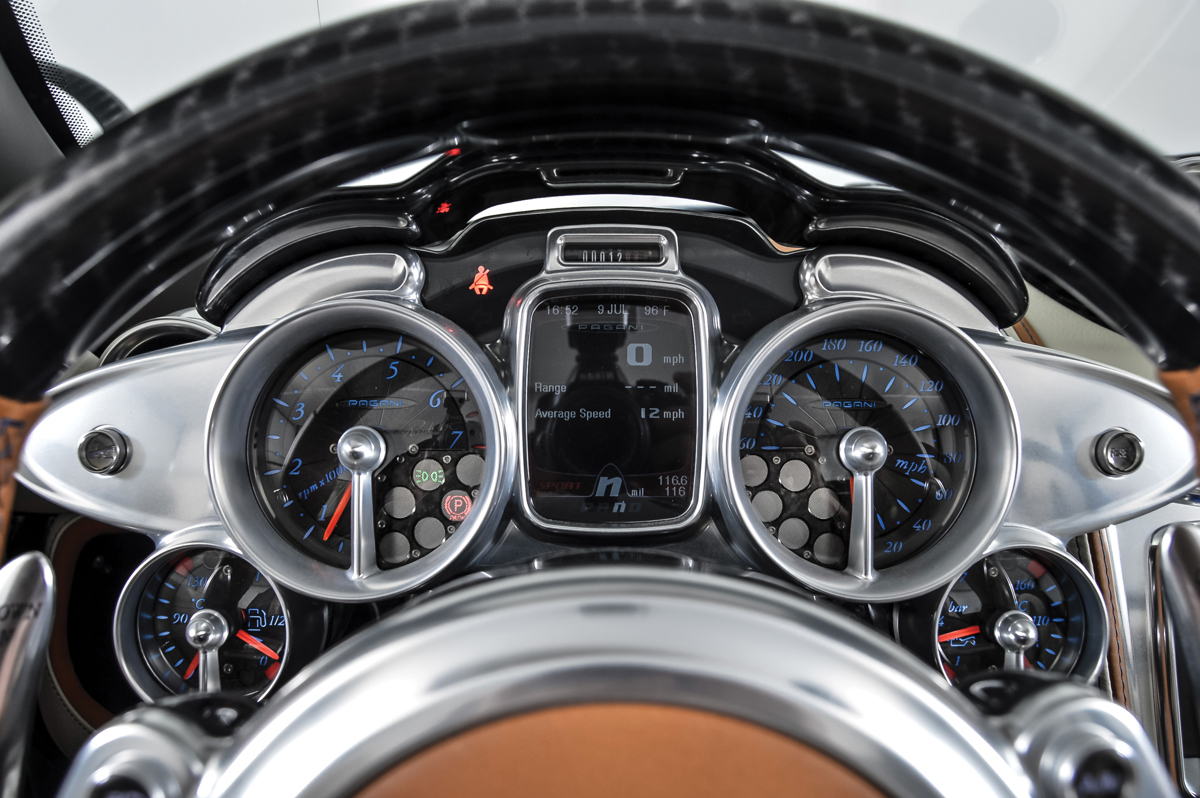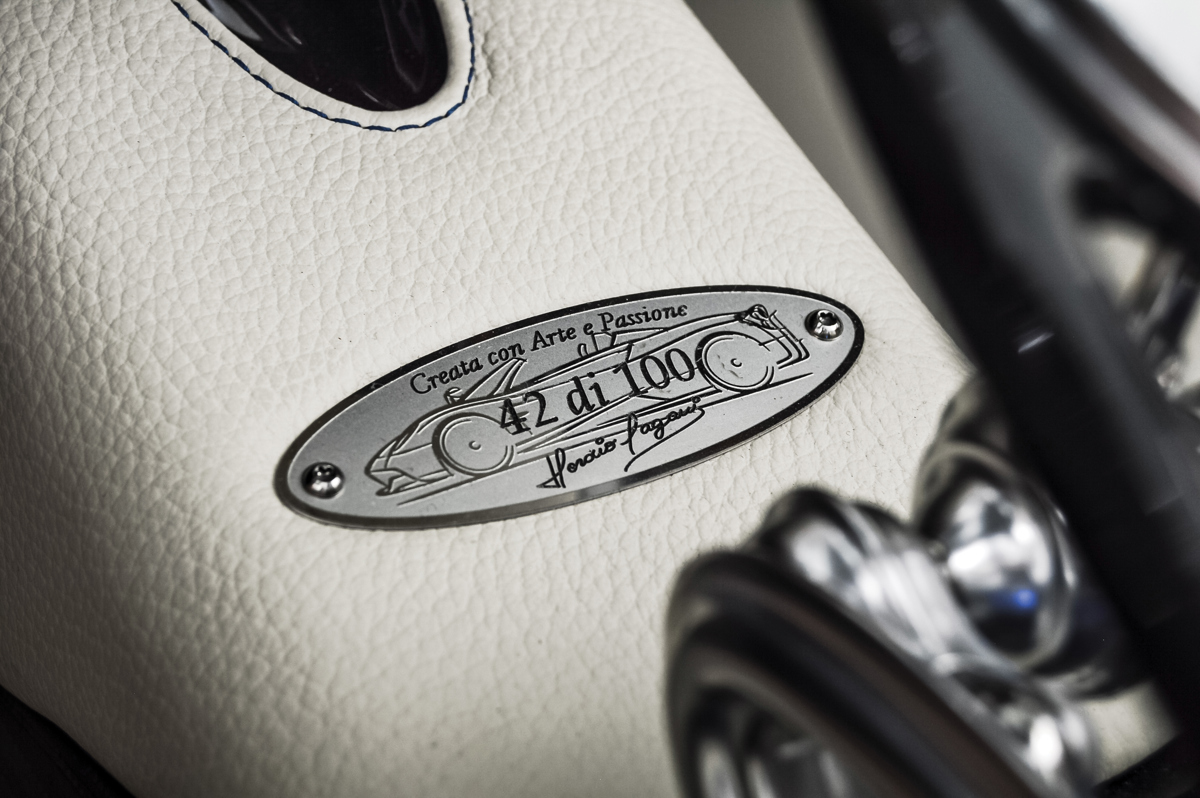Horacio Pagani founded Pagani Automobili in 1992 in a small nondescript factory between Modena and Bologna, Italy, with the dream to combine race-proven engineering and design into a supercar of his own which would be both an engineering marvel and a work of art. Before forming Pagani, his passion and dedication was recognized by Renault, who hired him as an engineer to improve the body of one of their racing cars. Later, after meeting with Lamborghini’s chief technical director, Horacio moved to Italy in 1982, where he was hired by Lamborghini and performed menial tasks, eventually working his way up to chief engineer, where he designed the Countach Evoluzione concept. When Lamborghini refused to purchase an autoclave to expand production of the carbon fiber parts, he opened his own consulting firm in Modena with a focus on advanced composite materials. It was this foundation that would eventually lead Horacio to embark on designing a prototype, which became the Zonda model that launched Pagani into the world’s spotlight.
A decade after launching the successor to the Zonda, the Huayra roadster capitalizes on the technology and engineering successes of its predecessors. On the development of the Huayra roadster, Horacio notes, “This is the most complicated project we have ever undertaken.” The team at Pagani redefined the styling of the coupe, giving it a slightly more aggressive shape and ultimately reducing the weight of the Huayra coupe, which was already the lightest hypercar available on the market. The finished product is nothing short of a work of art—each component shows an obsessive attention to detail, from the sheer perfection and symmetry of the exposed carbon fiber construction of the body and trim to the meticulous leather upholstery throughout the cabin. Only 100 examples of the Huayra were to be commissioned, each example embracing the Italian ideology Creata con Arte e Passione.
RM Sotheby’s is excited to offer the 42nd example of the Pagani Huayra roadster at the upcoming Arizona collector car auction, held at the Arizona Biltmore Resort and Spa in Phoenix, Arizona, 16–17 January 2020.
2018 Pagani Huayra Roadster
Estimate: $2,500,000 - $2,700,000 USD
This example is finished in Blue TriColore with bright silver detailing and exposed glossy carbon fiber trim. Pagani’s mastery of carbon fiber is displayed throughout, with tremendous attention to detail paid to the symmetry of the weave.
The Huayra roadster features a lightened and stiffened body in comparison to the coupe. A carbon-titanium-weave tub reduced weight by approximately 176 lbs. The completed vehicle weighs a mere 1,280 kg, making it one of the lightest hypercars on the market.
Active aerodynamics operate through a complex system of flaps controlled by the ABS and ECU systems, and the drag coefficient can be varied between .31 to .37 to keep the vehicle stable on its way to its nearly 240 mph top speed.
Beneath the rear cover, an AMG-sourced, 60-degree, 36-valve V-12 engine specifically built for Pagani by Michael Kübler features twin-turbocharging, producing 764 horsepower at 5,500 rpm and 737 foot-pounds of torque from 2,300 to 4,300 rpm.
A seven-speed automated gearbox developed by British racing firm Xtrac with an electronic mechanical differential was chosen to transmit power to the rear wheels and ensure astounding acceleration.
An inconel titanium exhaust allows the engine to breathe freely and exits through the centrally located quad tips, ranging from a gentle staccato to a full-fledged wail as the accelerator is depressed. The front and rear independent suspensions feature forged rockers, CNC-machined arms, and forged machine-controlled uprights.
The interior blends old-world craftsmanship and design with modern touches. Cream and brown leather covers the carbon fiber-backed seats and floors, along with polished metal and glossy exposed carbon fiber. A set of matching leather luggage bags are stored behind the front seats.
Behind the 20-inch front and 21-inch rear forged aluminum alloy wheels are massive 15-inch carbon-ceramic rotors with six-piston front calipers and four-piston rear calipers.
This example shows a mere 116 miles on the odometer and represents an exciting opportunity for a lucky new owner to obtain an essentially brand-new example of one of the most intricate and well-designed hypercars of all time.
An extremely limited run of 100 examples of the Huayra roadster were produced. This example is the 42nd example produced, as indicated by the plaque mounted on the cream leather upholstery ahead of the shifter.


